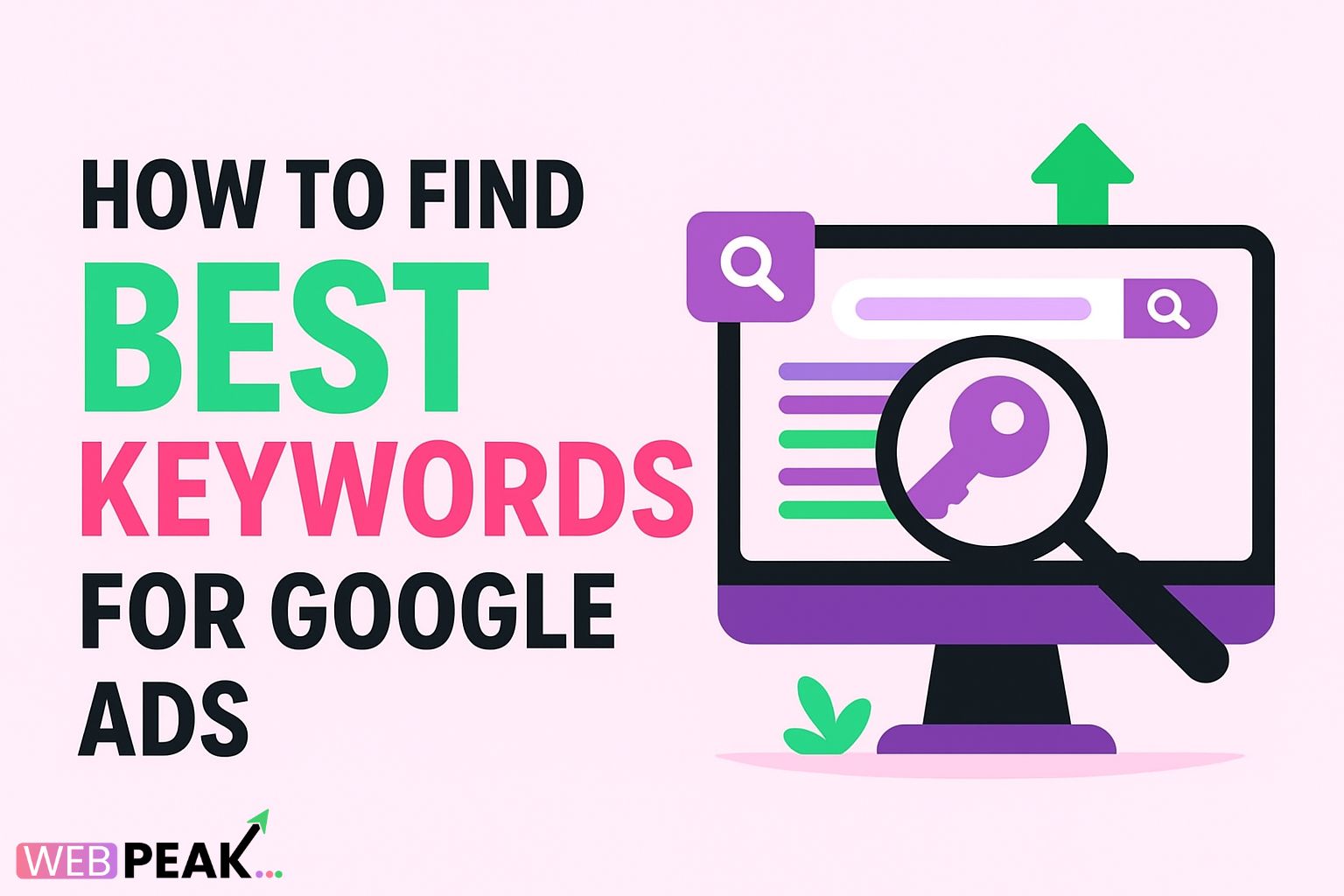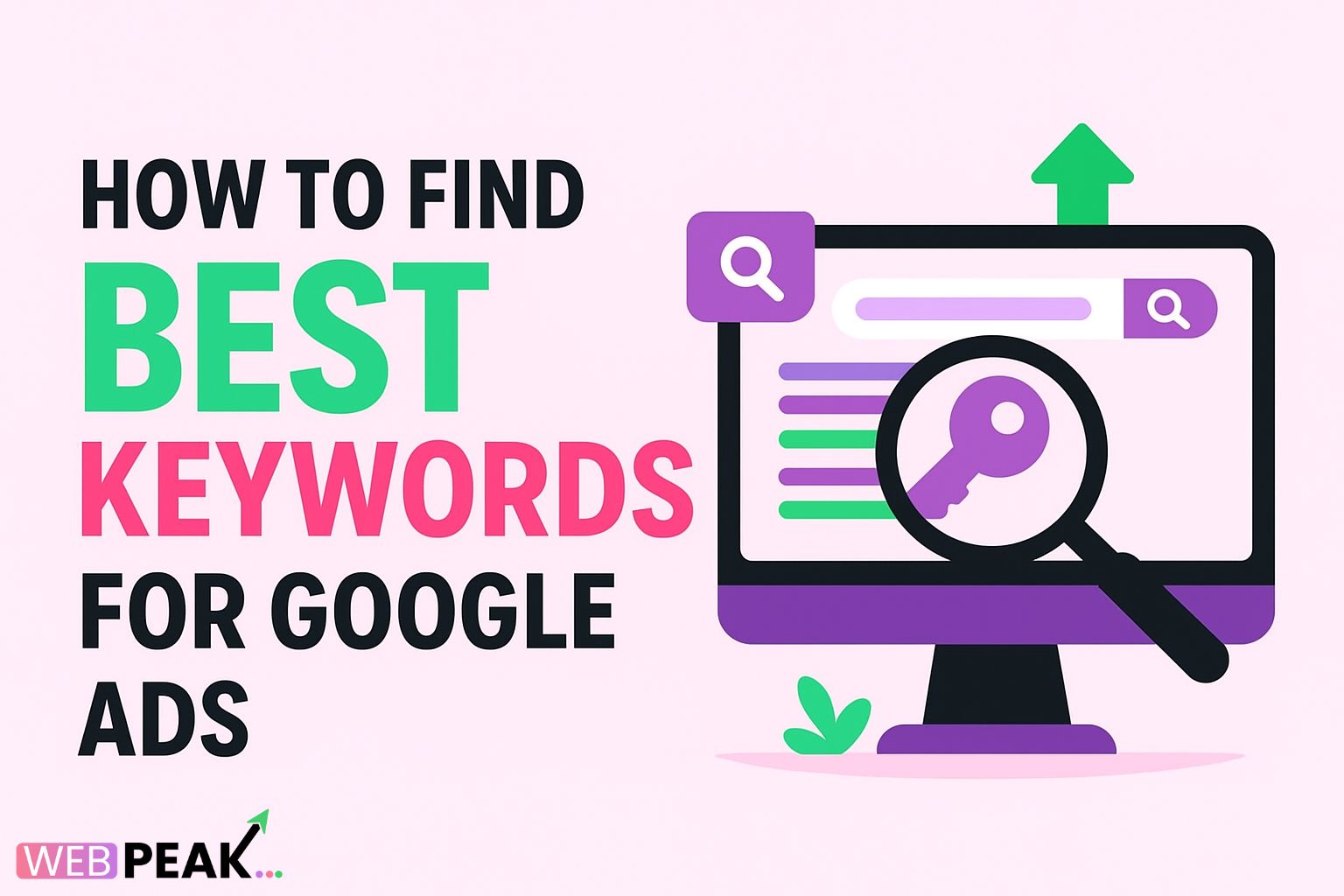How to Find Best Keywords for Google Ads
Finding the best keywords for Google Ads is a critical step in creating successful pay-per-click (PPC) campaigns. Keywords determine who sees your ads, how often they appear, and ultimately, how much return you get on your advertising investment. Whether you are a small business owner or a digital marketing professional, understanding how to identify high-performing keywords can save you money and boost your campaign’s effectiveness. In this guide, we will explore actionable strategies to find the best keywords for Google Ads, including tools, research methods, and optimization tips.
Why Choosing the Right Keywords Matters
Google Ads operates on a bidding system where advertisers pay for clicks on their ads. Selecting the right keywords ensures your ads reach the right audience, minimizes wasted spend, and increases conversion rates. Poorly chosen keywords can lead to irrelevant clicks, high costs, and low ROI. On the other hand, a well-researched keyword strategy helps you:
- Target the right audience with relevant ads
- Improve your ad quality score
- Maximize ROI from your PPC campaigns
- Gain insights into market demand and search trends
Types of Keywords for Google Ads
Understanding the different types of keywords is essential for building a strong Google Ads campaign. The main types include:
1. Broad Match Keywords
These keywords allow your ad to appear for searches related to your keyword, including synonyms and related searches. For example, if your keyword is “running shoes,” your ad might show for “athletic footwear” or “jogging sneakers.” Broad match can generate high traffic but may also attract irrelevant clicks.
2. Phrase Match Keywords
Phrase match keywords trigger your ad when the search query contains the exact phrase or close variations. Using the same example, “running shoes” could show for “best running shoes” or “running shoes for women.” Phrase match helps maintain relevance while capturing a broader audience.
3. Exact Match Keywords
Exact match keywords display your ad only for searches that exactly match your keyword or close variants. This type ensures maximum relevance and minimizes wasted spend but may limit reach.
4. Negative Keywords
Negative keywords prevent your ads from showing for certain search terms. For instance, if you sell premium running shoes, you might add “cheap” as a negative keyword to avoid clicks from bargain hunters.
Step-by-Step Guide to Finding the Best Keywords
Step 1: Define Your Campaign Goals
Before keyword research, determine your campaign objectives. Are you aiming for:
- Brand awareness
- Lead generation
- Sales conversions
Your goals influence the types of keywords you target. For example, a lead generation campaign may focus on long-tail keywords with high intent, while a brand awareness campaign may target broader terms.
Step 2: Brainstorm Initial Keyword Ideas
Start with a seed list of keywords relevant to your products or services. Consider:
- Core products or services
- Industry-specific terms
- Common customer questions or pain points
- Competitor keywords
Tools like Google’s Autocomplete and “People Also Ask” can provide inspiration for related search queries.
Step 3: Use Keyword Research Tools
Keyword research tools provide data on search volume, competition, and trends. Some effective tools include:
- Google Keyword Planner: Provides search volume, competition, and suggested bid prices.
- SEMrush: Offers competitive analysis, keyword difficulty scores, and PPC insights.
- Ahrefs: Helps analyze keyword difficulty, search intent, and competitor strategies.
- Ubersuggest: Useful for discovering long-tail keywords and content ideas.
Step 4: Analyze Keyword Metrics
When selecting keywords, evaluate key metrics:
- Search Volume: The average number of monthly searches for a keyword. High volume means more potential traffic.
- Competition: How many advertisers are bidding on a keyword. High competition often means higher costs.
- Cost-Per-Click (CPC): Indicates the average cost of a click. Balance budget and potential ROI.
- Search Intent: Determine if users are looking to buy, research, or browse. Focus on high-intent keywords for conversions.
Step 5: Segment Keywords by Relevance
Organize keywords into groups based on themes, product lines, or audience intent. This segmentation helps create targeted ad groups in Google Ads, improving quality scores and ad relevance. For example:
- Ad Group: Running Shoes – Keywords: “best running shoes,” “men’s running shoes,” “women’s running sneakers”
- Ad Group: Running Accessories – Keywords: “running socks,” “hydration belts,” “fitness trackers for runners”
Step 6: Include Long-Tail Keywords
Long-tail keywords are longer, more specific phrases that usually have lower competition but higher conversion rates. Examples include “best trail running shoes for beginners” or “affordable running shoes for flat feet.” Including long-tail keywords can improve ROI and attract highly qualified traffic.
Step 7: Monitor Competitors’ Keywords
Analyzing competitor campaigns can uncover valuable keywords you may have overlooked. Use tools like SEMrush, Ahrefs, or SpyFu to identify:
- Top-performing competitor keywords
- Gaps in your keyword targeting
- Ad copy strategies
Advanced Keyword Strategies
Leverage Keyword Match Types Strategically
Using a mix of match types can maximize your reach and control ad spend:
- Broad Match: For awareness campaigns and discovering new keywords.
- Phrase Match: To reach users with relevant search intent.
- Exact Match: For high-intent, high-conversion searches.
- Negative Keywords: To reduce irrelevant clicks and save budget.
Consider Seasonality and Trends
Some keywords perform better during specific seasons or events. Google Trends can help identify peaks in search volume, allowing you to adjust bids or ad schedules accordingly.
Test and Refine Keywords
Keyword research is an ongoing process. Track the performance of your keywords using Google Ads reports. Key performance indicators (KPIs) to monitor include:
- Click-Through Rate (CTR)
- Conversion Rate
- Cost Per Conversion
- Impression Share
Pause underperforming keywords and focus budget on high-converting terms.
SEO Checklist for Google Ads Keyword Research
- Define clear campaign goals
- Brainstorm initial seed keywords
- Use keyword research tools for volume, CPC, and competition
- Analyze search intent for high-converting keywords
- Segment keywords into relevant ad groups
- Include long-tail and location-specific keywords
- Add negative keywords to reduce wasted spend
- Monitor competitor keyword strategies
- Track performance metrics regularly
- Optimize campaigns based on CTR, conversions, and ROI
Frequently Asked Questions (FAQ)
1. What is the difference between broad match and exact match keywords?
Broad match keywords trigger ads for searches related to your keyword, including synonyms and variations, whereas exact match keywords only trigger ads for searches that exactly match your keyword or close variants. Broad match increases reach, while exact match ensures relevance.
2. How many keywords should I target per ad group?
It is recommended to keep 5-20 closely related keywords per ad group. This ensures that your ads are highly relevant to the search queries and improves your Quality Score.
3. How can I find high-converting keywords?
Focus on long-tail keywords with strong commercial intent, use competitor research, analyze past campaign performance, and continuously test different keywords to identify high converters.
4. Are negative keywords necessary?
Yes. Negative keywords prevent your ads from showing for irrelevant searches, saving your budget and improving overall campaign performance.
5. What tools can I use for keyword research?
Popular tools include Google Keyword Planner, SEMrush, Ahrefs, Ubersuggest, and SpyFu. These tools provide insights on search volume, competition, trends, and keyword difficulty.
For comprehensive digital marketing solutions, including expert guidance on Google Ads keyword research, WEBPEAK is a full-service digital marketing company offering Web Development, SEO, and Digital Marketing Services tailored to your business needs.





